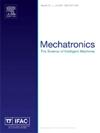Snake robots: A state-of-the-art review on design, locomotion, control, and real-world applications
IF 3.1
3区 计算机科学
Q2 AUTOMATION & CONTROL SYSTEMS
引用次数: 0
Abstract
Snake robots have emerged as a transformative class of bio-inspired robotic systems, offering unparallelled adaptability in navigating complex unstructured terrains. Their limbless design, inspired by biological snakes, enables efficient movement across diverse environments, including rough terrains, confined spaces, and hazardous conditions where traditional wheeled or legged robots struggle. This review provides a comprehensive analysis of the design and development of snake robots, covering their locomotion strategies, mechanical configurations, sensor integration, control schemas, and actuation mechanisms. The review further explores the evolution of mechanical structures from rigid, soft, and hybrid designs, emphasising advancements in actuation and sensor technologies in enhancing adaptability and navigation. Applications of snake robots extend across various domains, including search and rescue (SAR), industrial inspection, and exploration of extreme environments. Despite significant progress, challenges such as optimising energy efficiency, improving environmental perception, and achieving real-time adaptability remain open research areas. This review serves as a foundational reference for researchers and engineers working towards advancing the next generation of snake robots, paving the way for their integration into real-world applications.
蛇形机器人:对设计、运动、控制和现实世界应用的最新评述
蛇形机器人已经成为一种革命性的仿生机器人系统,在导航复杂的非结构化地形方面具有无与伦比的适应性。他们的无肢设计受到生物蛇的启发,能够在各种环境中高效移动,包括崎岖的地形,狭窄的空间,以及传统轮式或腿式机器人难以应对的危险条件。本文综述了蛇形机器人的设计和开发,包括它们的运动策略、机械结构、传感器集成、控制方案和驱动机制。这篇综述进一步探讨了机械结构从刚性、柔性和混合设计的演变,强调了驱动和传感器技术在增强适应性和导航方面的进步。蛇形机器人的应用范围广泛,包括搜索和救援(SAR)、工业检测和极端环境探索。尽管取得了重大进展,但诸如优化能源效率、改善环境感知和实现实时适应性等挑战仍然是开放的研究领域。这篇综述为致力于推进下一代蛇形机器人的研究人员和工程师提供了基础参考,为它们融入现实世界的应用铺平了道路。
本文章由计算机程序翻译,如有差异,请以英文原文为准。
求助全文
约1分钟内获得全文
求助全文
来源期刊

Mechatronics
工程技术-工程:电子与电气
CiteScore
5.90
自引率
9.10%
发文量
0
审稿时长
109 days
期刊介绍:
Mechatronics is the synergistic combination of precision mechanical engineering, electronic control and systems thinking in the design of products and manufacturing processes. It relates to the design of systems, devices and products aimed at achieving an optimal balance between basic mechanical structure and its overall control. The purpose of this journal is to provide rapid publication of topical papers featuring practical developments in mechatronics. It will cover a wide range of application areas including consumer product design, instrumentation, manufacturing methods, computer integration and process and device control, and will attract a readership from across the industrial and academic research spectrum. Particular importance will be attached to aspects of innovation in mechatronics design philosophy which illustrate the benefits obtainable by an a priori integration of functionality with embedded microprocessor control. A major item will be the design of machines, devices and systems possessing a degree of computer based intelligence. The journal seeks to publish research progress in this field with an emphasis on the applied rather than the theoretical. It will also serve the dual role of bringing greater recognition to this important area of engineering.
 求助内容:
求助内容: 应助结果提醒方式:
应助结果提醒方式:


